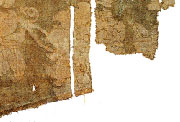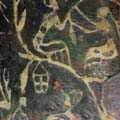 |
 |
|||||||||||||||
 |
||||||||||||||||
 |
||||||||||||||||
 |
||||||||||||||||
| Preface |
||||||||||||||||
Among the natural scenery of the world, cloud-capped peaks and boundless oceans have inspired endless imagination and the urge to explore. In the realm of humanities, Oriental culture has always been regarded as another kind of unreachable heights and fathomless depths, nurturing a uniqu e wisdom and the quest for idealism. Within these endless ranges and wide oceans are a vast amount of treasure. Chinese silk and ceramics are the two most notable creations which won Western admiration, to the extant that these two terms were used directly to denote China in some periods in history. Since these two types of artefacts play such an important role in Chinese cultural history, it is our express responsibility to explain to the world their origins and development. e wisdom and the quest for idealism. Within these endless ranges and wide oceans are a vast amount of treasure. Chinese silk and ceramics are the two most notable creations which won Western admiration, to the extant that these two terms were used directly to denote China in some periods in history. Since these two types of artefacts play such an important role in Chinese cultural history, it is our express responsibility to explain to the world their origins and development.Preservation of textiles is highly difficult, and the scarcity of examples earlier than the Song dynasty even in excavated material had led to a lack of study. This situation has changed in the twentieth century, especially over the last fifty years, due to the increase of excavated examples. Ancient textiles has attracted the attention of scholars equipped with knowledge of modern textile technology. In the 1980s, two specialized museums were founded. One is the China National Silk Museum in Hangzhou, Zhejiang, and the other is the Suzhou Silk Museum in Jiangsu. The establishment of these two museums signified the maturation of systematic research in ancient textiles. It also signified that a special team of researchers, though small in number, has been formed. Zhao Feng, the author of this book, is a member of this growing team in these recent twenty to thirty years. He is not among the oldest, but he is the most noted. He has begun his study with modern textile technology, and progressed to the history of textiles and the history of weaving technology under the direction of Zhu Xinyu and Zhou Qicheng. While obtaining the master and doctor degrees in these two respective fields, Zhao has persisted in the study of first-hand material. He has on one hand made close examination and technical analysis of excavated textiles from the tombs in Dulan, Qinghai, which was then under Tibetan sovereignty, as well as textiles from the tomb of Yelu Yuzhi of Liao dynasty in Chifeng, Inner Mongolia etc. On the other hand, he has travelled to study Chinese textiles in European and American collections. He is also most prolific in output, having written many articles besides the two books Sichou yishu shi (A History of Silk Art) and Tangdai sichou yu sichou zhilu (Silk and the Silk Road of the Tang dynasty). His study combines direct observation and systematic research, hence he has become the leading scholar in the study of ancient Chinese textiles. Publishers are eager to invite him to compile volumes on archaeological study of textiles. He believes that many readers do not yet have a thorough understanding of the achievements of Chinese textiles. In order to produce a systematic publication on this topic, he turned down the offers of many publishers. He makes a choice selection of 100 representative pieces, gives detailed introduction to each item, provides English translation with aid of colleagues from Hong Kong, and supplements his text with copious illustrations. Despite his meagre earnings, he digs into his own pocket to facilitate the publishing. Although an amateur in the field of textiles, I do know that jin-silks of the Han dynasty have inspired wonderment from the Romans. I have also experienced the same awe and fascination when I beheld textiles two thousand years old from Mawangdui, Changsha, and from Chu culture tombs in Mashan during the Warring States period. It is recognized that Chinese textiles have contributed to human culture in an important way. I am confident that the author provides research material of the highest quality in this book of modest size. The bilingual format will undoubtedly benefit Western readers to comprehend this topic and to enjoy this book. YU Weichao 17 August 1999 Beijing |
||||||||||||||||
| THE BOOK | ||||||||||||||||
| AUTHOR | ||||||||||||||||
| CONTENTS | ||||||||||||||||
| ORDER | ||||||||||||||||
| CONTACT | ||||||||||||||||
| LINKS | ||||||||||||||||